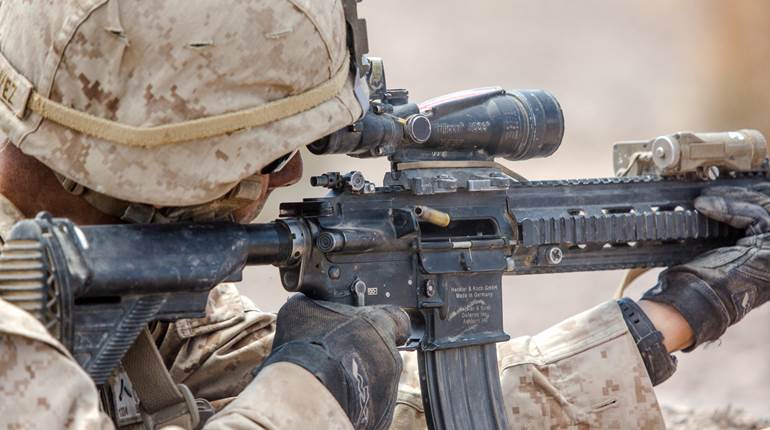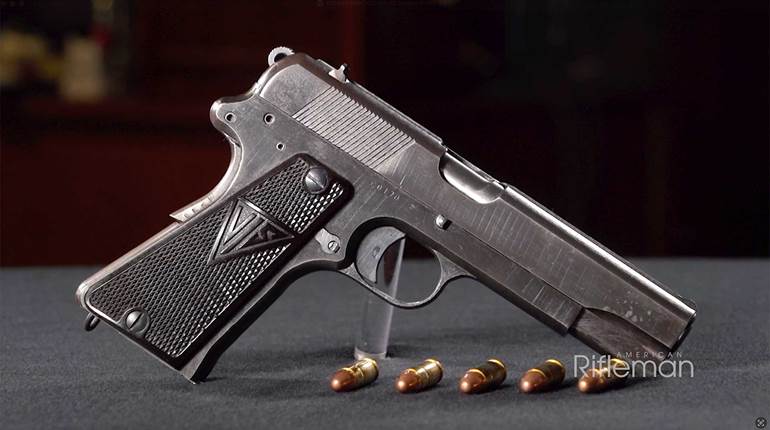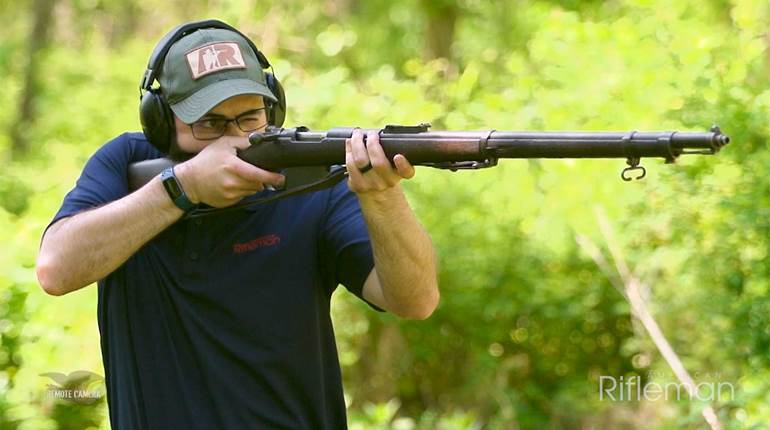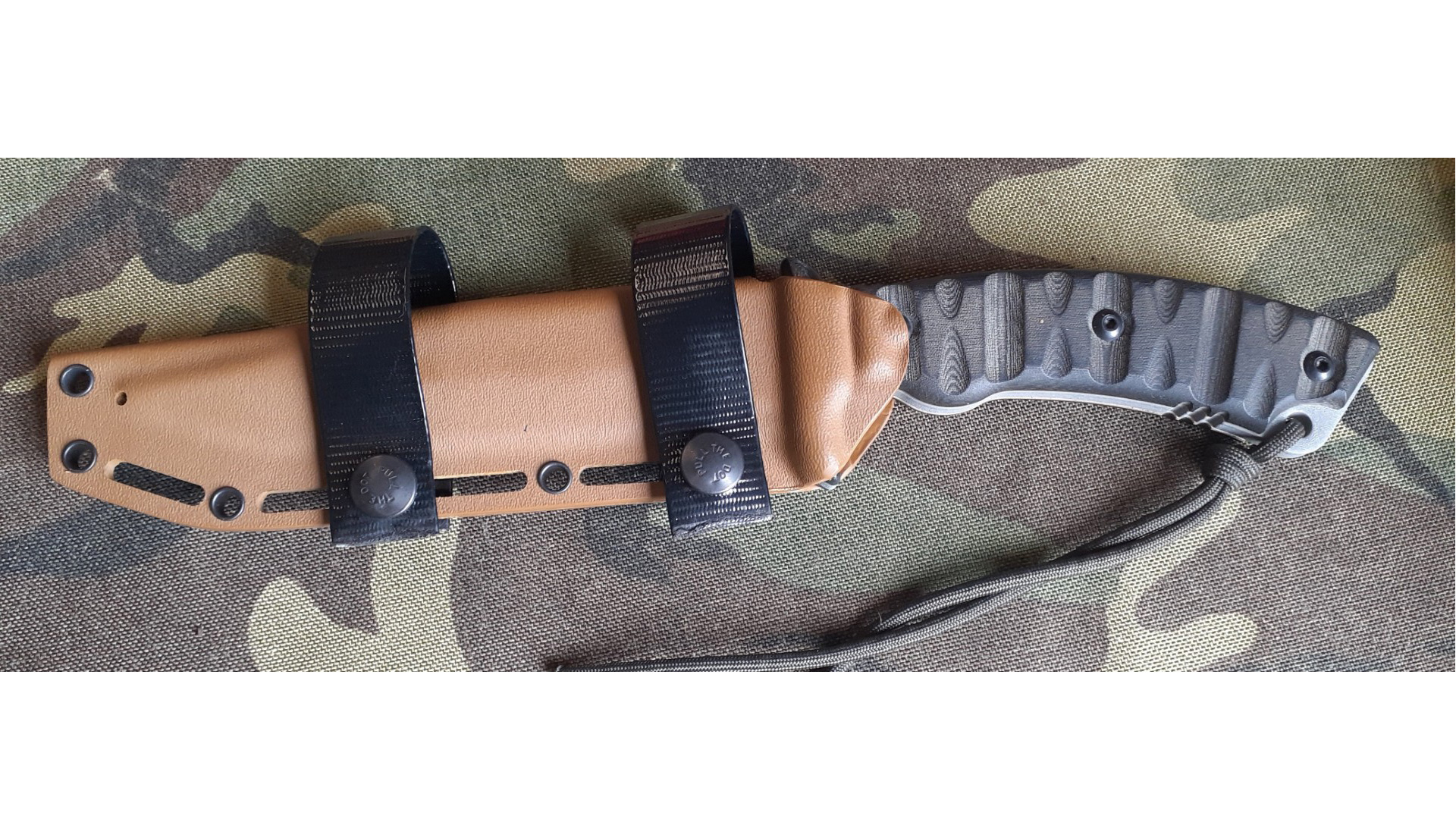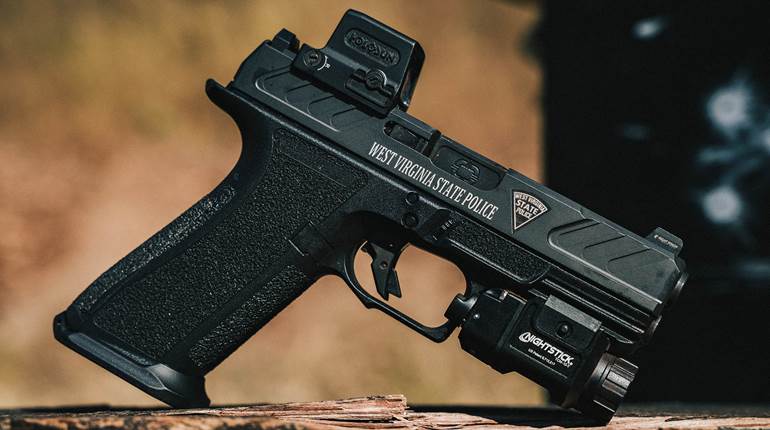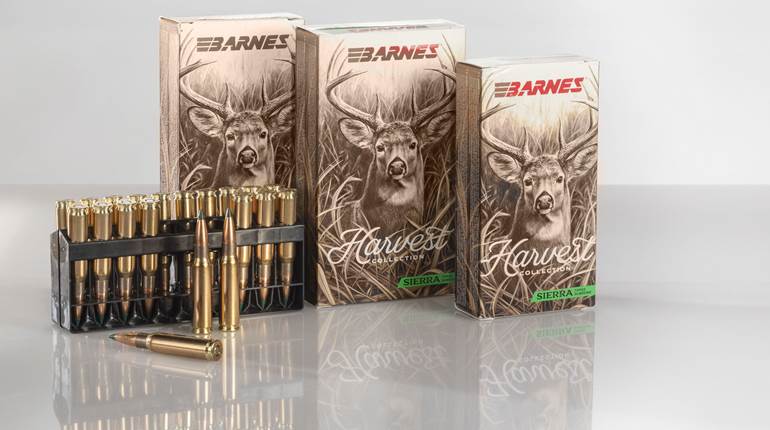
Despite the efforts of several firearms historians over the past 30-plus years, some questions concerning the Fenian Needham Conversion Rifle’s origins, its development, its use and its effectiveness, are still with us. These questions have remained unanswered, or only partially so, such as: Why are most of these Needham conversion rifles Bridesburgs? How did the Fenians get these Bridesburgs? What do the stock markings on Fenian guns signify? When were these markings applied, and who applied them? Why do many of these rifles appear to be “composite” or poorly assembled guns? How effective was the Needham’s mechanism in comparison with other breechloading systems? Why were the conversions done in Trenton? How did the Fenians get these Needham rifles to the Canadian border? Why do some, but not all, of the guns have shortened, or spliced, forestocks? How much actual practice did the Fenians have with the Needham rifle prior to going into battle? Finally, one must also ask: How did these Needham rifles perform in combat?
Before going into the details necessary to answer these questions, the history of the Fenian movement should be addressed— but space does not allow for an in-depth chronology of the Fenians and their activities here. Suffice to say that the Fenian Brotherhood in the United States, and the secret Irish Republican Brotherhood (“IRB”) in Ireland, were founded concurrently in 1858 by two fugitives from the failed Irish “Rising” of 1848: John O’Mahony in New York and James Stephens in Ireland. Invoking the horrors of the Irish potato famine of the 1840s and the subsequent emigration of millions of impoverished Irish families to the United States, Canada and Australia, O’Mahony and his group were able to establish armed Fenian units in America prior to the Civil War, whose sworn purpose was to sail back to Ireland and free it from British rule.

During the Civil War, these units fought valiantly on both sides, and membership in the Fenian Brotherhood quickly spread to other “Irish” units in both armies. At the end of the war, plans were being made to support another “Rising” with the IRB in Ireland, but the movement, now numbering in the many thousands, soon split into different factions, with the majority of the American Fenians instead supporting an attack on Canada and holding it hostage for Ireland’s freedom. Brave, dedicated and very capable veteran soldiers, the Fenians were supported by an Irish-American and Irish immigrant population across the country that scrimped and saved from their meager earnings to buy Fenian bonds in order to contribute to the Fenian war fund.
It was this war fund that paid for 7,500 “Springfield” rifle-muskets that the Fenians contracted for in November 1865 with Alfred Jenks and his son, Barton, at the Bridesburg manufacturing company (a factory that produced machinery for textile mills before and after the war) near the federal arsenal at Frankford, in the greater Philadelphia, Pa., area. The Fenians were desperate for arms, and the Bridesburg works had produced more M1861 and M1863 “Springfield-Type” rifle-muskets than any of the other twenty-some private contractors during the war.
Although Jenks and his son had fulfilled all of their contracts with the Union, and had even sold some guns to the government that previously had been rejected, Jenks apparently still had at least 7,500 rifle-muskets—both M1861s and M1863s—on hand, or the parts to assemble them, to sell to the Fenians. Jenks was the only wartime contractor who still had a large supply of rifle-muskets and parts on hand, and, unlike conventional supposition among some arms historians in recent years, there were not millions of surplus arms available for sale at the end of the Civil War. Indeed, Secretary of War Edwin Stanton had forbidden the sale of surplus government arms at the end of the Civil War, out of fears concerning the worsening situation with French intrigues in Mexico.

The Fenian Secretary of War in New York, Brig. Gen. Thomas W. “Fighting Tom” Sweeny, sent Col. Charles Carroll Tevis, the Fenians’ adjutant general, to negotiate for the rifle-muskets with the Jenks’ at Philadelphia in fall 1865. Both Sweeny and Tevis had seen hard service in the Union Army, and both of them knew what they were doing. The contract called for the rifle muskets to be delivered to Maj. William O’Reilly, the Fenian arms inspector in Philadelphia, by March 1866, so it must be presumed the Fenians were still collecting funds to pay for the guns— or that many of the Bridesburgs had to be assembled from leftover, or previously rejected, but available, parts. One of the telltale hallmarks of a Fenian Bridesburg is an “O” found on the lock plate of many of these muskets, just under the “E,” or the “S,” in “BRIDESBURG.” This marking is thought to be an indication of rejection by U.S. Army arms inspectors during the Civil War.
Meanwhile, according to a Dec. 20, 1865, letter from Edward Archibald (the British consul in New York) to Canadian official Sir John Michel, an informer within the Fenians’ main office in New York had stated to Archibald: “… he knows of 7,500 stand of arms stored in two or three different places in this city, (that were) purchased by O’Mahony, and for which my informant saw the money paid.”
This accumulation of arms pre-dates the first of the Bridesburg acquisitions by at least a month, and most likely includes arms brought back from the Civil War by returning Fenian veterans. These arms are the ones marked with an “I (Shamrock) R” stamping in the stock, between the lock plate screws, since Fenian President John O’Mahony, and the supporters in his “wing,” acknowledged that the Fenians were the American version of the Irish Republican Brotherhood, founded and led by James Stephens in Ireland, and its aim was to establish an “Irish Republic.”

By January 1866, a major difference in strategies, and deep personal animosities, had split the Fenian movement into three “wings:" the “Stephens Wing” that advocated fighting only in Ireland; the “O’Mahony Wing” that did not want to start an uprising in Ireland, or an attack on Canada, until preparations were complete; and, the “Roberts Wing” that wanted to invade Canada as soon as the St. Lawrence River froze in the late fall and winter of 1866. From this point on, the various holdings of Fenian arms appear to have become a contentious issue among the various factions within the organization. While O’Mahony had nominal control over the arms collected thus far, Sweeny (an adherent of the Roberts’ Wing) was in control of the 7,500 Bridesburgs being acquired from Jenks—or at least 6,500 of them, as the first 1,000 guns were delivered in mid-January 1866.
After getting the first thousand muskets in January 1866, O’Reilly received the crates containing the rest of the Bridesburg rifle-muskets in March, April and May 1866 and, after inspecting them (and then stamping them with an “IN” between the lock plate screws), he hurriedly shipped them out, with the largest consignment of rifle-muskets going to Buffalo, New York. All 7,500 Bridesburgs were shipped out, although the total has been reported incorrectly as 4,220—which was the number of guns reported as shipped by May 3, 1866, but did not include the remaining 2,280 arms still awaiting shipment. The crated guns went out to Fenian agents, who, in turn, arranged for them to be shipped by rail to mustering points along the Canadian border where the muskets were to be issued to the arriving Fenians. Although Sweeny later reported the Bridesburgs were the only shoulder arms available to his forces, there were other arms available to the invading Fenians as one letter directed Fenians from New Orleans to disguise the arms that they were bringing to the battlefront—and there had been no shipments of Bridesburgs anywhere south of Baltimore.

Most of the Fenians’ weapons were seized by U.S. troops at the mustering points when the Johnson Administration made a policy “about-face” and declared the Fenians to be in violation of the Neutrality Act. However, Col. John O’Neil and about a thousand men slipped over the border in the Niagara region with several wagonloads of extra Bridesburg muskets to arm successive reinforcements. On June 2, 1866, O’Neil’s forces met a brigade of Canadian Militia at Limestone Ridge near the hamlet of Ridgeway, and after a stiff, but brief, battle, O’Neil’s Fenians thoroughly routed the Canadians. Realizing support was not forthcoming, O’Neil tried to slip back across the Niagara River, but after trouncing another Canadian force at Fort Erie, he and his men were intercepted by the U.S.S. Michigan and arrested. While the U.S. Government paid the Fenians’ train fare back to their homes, federal troops confiscated most of their arms.
The guns were stored in several federal arsenals and forts and, according to Gen. George G. Meade’s report in October 1866, the guns were not being cared for properly and were rusting badly. Indeed, the Fenians were aware that their arms quickly were becoming unserviceable, and they petitioned the Johnson administration for their return. Understandably, the U.S. Government declined to return the arms, but when threatened with the loss of support by the Democratic “Irish Voting Bloc” in the impeachment fight with the “Radical Republicans” in Congress, the Johnson administration caved in and returned all of the guns that had been confiscated to the Fenians by the end of 1866.
At this point, the Fenians now had thousands of rusty muskets, with perhaps nearly a thousand of them never having been cleaned since the fighting in the Niagara region six months earlier. Any military organization faced with such a situation would have organized a “working party,” disassembled the arms, cleaned the parts, and re-assembled the muskets. Undoubtedly, this is what the Fenians did. However, from the mixture of ill-fitting, and disparate, parts that is evident on most surviving Fenian rifle-muskets and Needham conversions, it is obvious that the organizers of this effort relied on the assumption that all of the gun parts were perfectly interchangeable.

As anyone who has handled and examined quantities of Civil War muskets is aware, most of the parts are almost interchangeable, but some final fitting was required at the factory—especially with butt plates. Thus, it is not unusual to find badly pitted parts alongside pristine parts on Fenian muskets and Needham rifles and this apparently occurred when the guns were disassembled, cleaned and reassembled, with the original parts not being reassembled on the same firearm. It would seem all of the barrel bands must have gone into one bin, all of the butt plates, etc., into another bin, and then, after cleaning, were put back on whichever musket stock was handy.
At this point, the Fenians now had perhaps as many as 10,000 rifle-muskets, with many, if not most, of them assembled with ill-fitting parts. By 1866, the era of the muzzleloading rifle-musket was coming to an end, and the Fenians realized the British were already re-arming the Canadian forces with rifle-muskets that had been converted into breechloaders—and they would be facing troops with rapid-fire breechloaders on their next incursion into Canada. The British used the Snider-designed, breechloading system (invented by American Jacob Snider), and it was a simple, and effective, way to convert their arms.
Meanwhile, the U.S. Army had been developing a system to convert its rifle-muskets into breechloaders and had settled on an ingenious method that had been invented by Erskine S. Allin, the master armorer at Springfield Armory. Although the Fenians tried to obtain the rights to use this “trapdoor” system, they were unsuccessful. Instead, the Fenians turned to another system that had been offered to the state of New York in its breechloading conversion trials by two English brothers—Joseph and George Needham. The Needham’s system did not score well in the trials held by the New York state militia, and it can only be supposed the English Needham brothers were content to get whatever manufacturing royalties they could from whomever they could—even Irish nationalists.

Conversion to the Needham system involved cutting off the lower 3" of the barrel, threading it and then screwing in a new breech. The new breech had a side-swinging breechblock, that was pivoted at the front. This pivot also held a half-moon shaped extractor that would move to the rear and stop at a 45-degree angle when the breechblock was shoved forward. In order to shove it forward, the user put the hammer at half cock, grasped a knurled knob at the rear of the breechblock between the right thumb and forefinger and smartly opened the breech.
When firing, the breechblock was locked by an unusual system. From the full cock position, a steel triangular wedge, pinned to the face of the hammer, fell into a slot, forcing the spring-loaded firing pin forward while locking the breech. The rear of the spring-loaded firing pin also slipped into an indentation at the rear of the breech, in order to keep the breechblock in place before firing. After firing, the hammer was brought back to half cock, the breechblock was shoved forward, and the spent cartridge case was extracted from the chamber—but only part of the way. The user then had to turn the rifle on its right side, hold the breechblock open with his left hand, and presumably shake the rifle in order to eject the empty case.
The Needham brothers had produced several prototypes and variants (mostly using Enfields) prior to the standardized system used by the Fenians, but the Fenian version certainly was rife with variations, since the muskets being converted already had been reassembled haphazardly after their cleaning in the winter of 1866-1867. The only constant was the use of a M1863 hammer (regardless of the date on the lock plate or the type of barrel bands) with its numbered wedge pinned into its face. Otherwise, while some rifles were complete, as built, and many others looked like rust-pitted “parts” guns, there were many different manufacturers’ names stamped on the lock plates, since the Fenians had also acquired other rifle-muskets before and after the Bridesburg deal. Once the manufacturing rights were obtained, the next step was to find a place to convert the muskets to the Needham patent.

Patrick J. Meehan—a very controversial figure in Fenian circles, to say the least—was designated to oversee the operation. He formed a company that he called the "Pioneer Arms Works," and arranged to rent a portion of a former locomotive factory in Trenton, N.J., that had been used as a musket factory during the Civil War. Meehan’s operation was underway by 1868, and Alfred Cole was supervising the conversion process, assisted by a young German immigrant gun designer, Hugo Borchardt. Borchardt later gained fame through his work with Sharps rifles, and his basic semi-automatic pistol design proved to be the inspiration for the well-known German Luger pistol.
Apparently, there was no attempt to undo the damage from the earlier haphazard mixing of parts during the cleaning process as many, if not most, Needham conversion rifles have ill-fitting or mismatched parts. The gunsmiths’ attention to detail in the manufacturing process is unknown, but by using data from comparison tests undertaken to determine the ability of the rifles to chamber ammunition properly, it would appear that there was some variation in dimensions between the various parts of the action and chamber.
Moreover, there were at least two different sizes of firing pins and different breechblocks to accommodate them, with the firing pin retaining screw hole drilled at different points. Based on data recorded from various Needhams, it seems the change from a “long” firing pin to a “short” striker took place somewhere between the serial numbers (found on the inside of the hammer, with a corresponding number found on the inner surface of the hammer wedge) of 153 and 236. This change apparently was an improvement during the conversion process, and it may have been a result of firing pin breakage in the original design. In total, the Fenians converted 5,020 rifle-muskets (mostly Bridesburgs) into Needham breechloaders.

At some point, those charged with shipping the Needhams to the secret arms caches along the New York and Vermont border with Quebec recalled one of the most vexing problems that had plagued the failed 1866 raid was that federal authorities could easily identify crates full of shoulder arms. Since the two-man crates had to be at least about five feet long and measure over eighteen inches in width and depth in order to hold ten shoulder arms, they were very recognizable. Crates meeting those sizes had been seized by federal troops in 1866, as they were being unloaded from railroad cars in Cleveland, Buffalo, upstate New York and Vermont.
A solution was to cut the fore-end of the stocks under the middle band (on both M1861 and M1863 rifle-muskets), usually with a “V”-shaped cut, so the guns could be disassembled and shipped in crates no longer than the barrel—marked as containing something other than firearms—and later reassembled. Although most of these altered Needhams have a “V” cut, some have a straight cut, and while some are pegged, others are not. It would seem the Fenians could not decide on a unanimous approach to this expedient.
Some Needhams that were made from former M1863 rifle-muskets with their narrow barrel bands have been found with the stocks simply cut off a bit forward of the lowest barrel band as was done with post-Civil War “sporter” surplus musket muzzle-loaders. However, unlike muzzle-loading “sporters,” there are no tubes soldered under the barrel for a ramrod, since a ramrod is superfluous with a breechloader. This may or may not be a Fenian modification but since .58-cal., center-fire ammunition had pretty well disappeared from the commercial market by the 1890s, and the Fenians were scrambling to find any quantities of .58-cal., centerfire ammunition in 1870, it would be hard to imagine a civilian hunter taking the effort to shorten the forestock on his surplus Needham rifle. Conversely, shortening the stock in this manner would have been a definite advantage for the Fenians.

The Fenians shipped these altered Needham conversion rifles, some unaltered Needhams and thousands of rifle-muskets to secret arms caches and depots along the New York, New England and Canadian border over a period of months in early 1870. The guns were stowed away in the barns and cellars of Fenian supporters and sympathizers, waiting for the signal to attack Canada again.
To date, no documents have been found that indicate any of the Fenians who invaded Canada at Franklin, Vt., had any prior training with Needham conversion rifles. The conversion program and the shipping efforts were all done in strict secrecy, and if there were any Needham rifles sent to Fenian units across the country prior to the 1870 Raid, they were few in number and most likely were only made available for group instruction. This was not a case of converting the rifle-muskets into breechloaders in Trenton, distributing those guns to Fenian units in New York and New England for training, and the guns then being brought to the scene of action by men who had trained with them. Far from it—the guns were issued to the Fenians from the backs of wagons, parked along the road to the battlefield, on the day before the battle and to some of them on the day of the battle.
Meanwhile, the Fenian leadership was also scrambling to find .58-cal., centerfire cartridges for their Needhams. The U.S. government had replaced the M1865 .58-cal., rimfire and centerfire rounds with the .50-70 Gov't. cartridge in 1866, so the short-lived .58-cal., centerfire cartridge, in its several iterations, apparently was in short supply and difficult to find, at least in the quantities required by the Fenians. From fragmentary references in available documents and from recovered battlefield relics, it appears the Fenians issued several different types of .58-cal. centerfire rounds at the Battle of Eccles Hill. Apparently, the Fenian Needhams, like the Needham prototypes, were chambered for the 2” .577-cal. Boxer cartridge case—perhaps in anticipation of using captured Canadian ammunition—but they would accept shorter .58-cal. cartridges. During examination, evaluation and testing of several guns, it was discovered that the Fenian Needhams will fire the slightly necked-down Snider round, but will not chamber a straight 2” cartridge case.

Although Gen O’Neil (by now president of the Fenian Brotherhood) expected many thousands of Fenians to mass on the border at Malone, N.Y., and at Franklin, Vt., in the last days of May 1870, only a fraction of that number actually arrived. There are many reasons for the low turnout, but the small size of this group of only 800 to 1,000 men at Franklin dashed O’Neil’s hopes of a successful drive across Quebec to Montreal. Many of those who did arrive were issued rifles with which they had little, if any, familiarity and a mixed lot of ammunition—while marching to the battlefield at Eccles Hill.
Meanwhile, thanks to the energetic efforts of Asa Westover, a local Canadian farmer and the leader of the local Missisquoi home guard, the “Red Sashes” were armed with the latest version of the breechloading Ballard rifle and were awaiting the Fenians. These sharpshooters had positioned themselves on Eccles Hill to defend their homes. Soon augmented by Canadian militiamen armed with .577-cal. Snider breechloaders, they engaged the Fenians at long range, as the Fenians came over the border. The battle lasted for several hours, with the Canadians repulsing every Fenian advance.
As the battle went on, Canadian observers noted the Fenian fire slackened continually, until there was only sporadic fire at its conclusion. From damaged and crushed cartridge cases recovered in recent years from the battlefield and from a series of recently conducted tests, it seems that the Needhams definitely had a propensity to jam when loading and unloading. This was due to the inherent design flaws in the Needham system, differences in the tolerances in the mechanism, differences in the dimensions of the various .58-cal., centerfire cartridges available at the time and the Fenian troops’ unfamiliarity with the weapon.

During the initial stages of the battle, O’Neil had been arrested by U.S. Marshals and spirited away from the battlefield. The Fenians, sensing their forlorn hope of success, once again surrendered to U.S. authorities and were sent home, but this time without any hope of regaining their arms. The recovered Needham rifles and rifle-muskets, as well as unassembled Needhams from the Trenton “armory,” were sold at auction from New York’s Watervliet Arsenal in 1871. While a few Needhams were carried in the 1871 Fenian Raid on Manitoba (from Pembina, Minn.), the Fenians and their Needhams had parted ways, with some of the rifles being sold by surplus dealers to at least one militia unit in Georgia, a few to various Irish-American organizations, a few to Panama and the rest to civilians. The Fenian Brotherhood went “underground” and morphed into the American support branch of the secret Irish Republican Brotherhood—the Clann na Gael. As the Clann na Gael, the Fenians surfaced again to financially support the next Irish bid for freedom, the Easter Rising of 1916.
The Needham conversion rifle was a sincere attempt by the Fenians to match technology with the British and Canadian Snider rifle. However, the Needham did not stand up to the contest—as a result of a flawed design, inconsistent machining, mixed ammunition and a lack of prior training for those who were expected to fight with the gun. Nevertheless, the Needham Conversion rifle is the only firearm that was manufactured specifically to support the 800-year struggle for Irish independence and, as such, it certainly deserves a well-earned niche in Irish, American and Canadian history.
This article is largely drawn from a far more detailed version, by Kenneth L. Smith-Christmas and Ross Jones found in the Spring 2020 issue of the Journal of the Company of Military Historians, Volume 72 Number 1.












